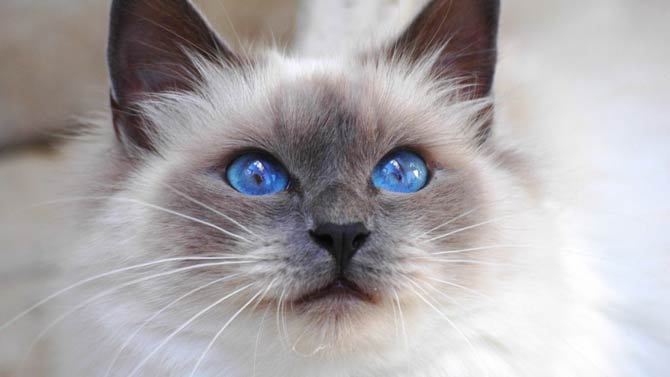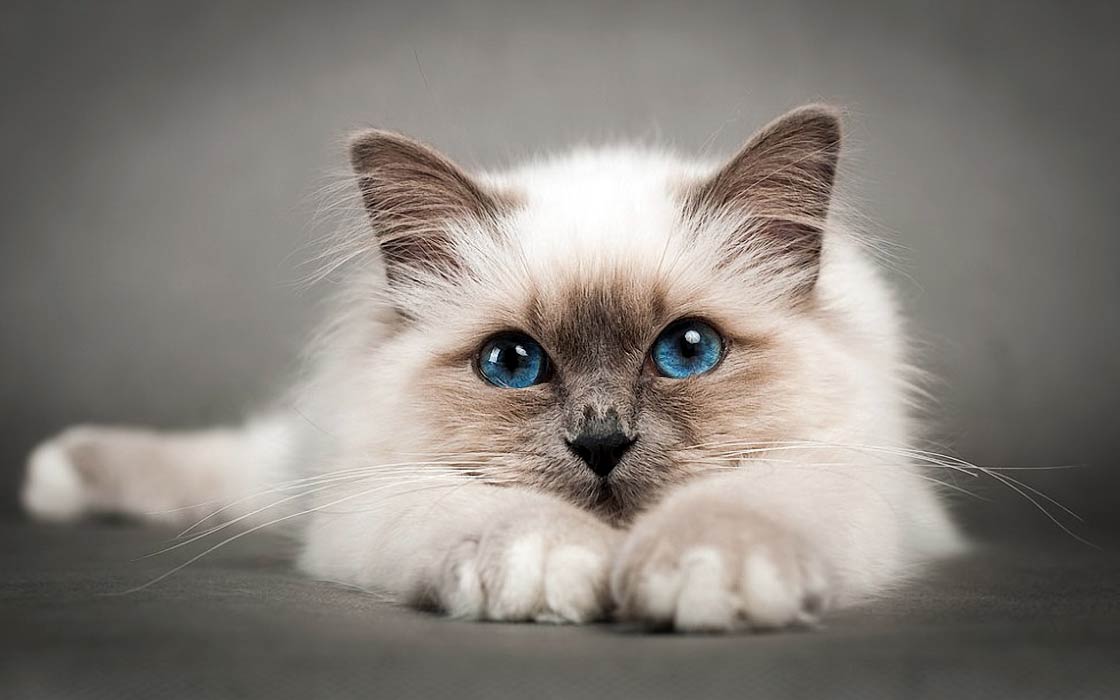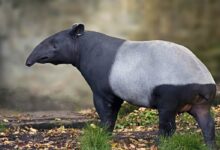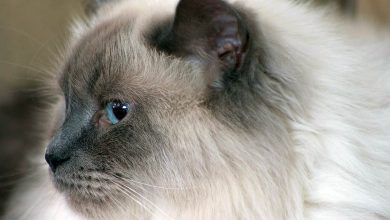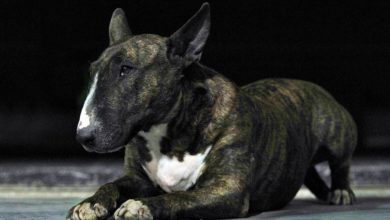Sacred Cat of Burma, Sacred Birman
Unlike its Siamese and Burmese relatives, Birman cat is an extremely calm and devoted animal. Perhaps for this reason it is sometimes called a sacred cat? Although its name sounds almost identical to the Burmese cat, both its appearance and character make them completely different animals.
FIFe classification
- Category II: Semi-longhair cats
- EMS code: SBI
- Other Names: Sacred Birman, Sacred Cat of Burma
- Country of origin: Myanmar (aka Burma)

History of the breed
The Birman cat is one of those breeds around which many legends have arisen. The peoples of Burma believed that the beautiful blue color of the iris was a “gift” from the goddess, who rewarded him for devotion. For the same purpose, the goddess turned his white fur into a golden one; only the paws as a symbol of purity remained white. Cats that began to be born with “goddess marks” were thought to be reincarnations of dead monks.
However, the true history of the breed’s origin has not been known. According to one theory, it is a cross between Siamese cats and Turkish Angoras or Persian cats. This could have happened in Southeast Asia. These crossbreeds gave rise to long-haired blue-eyed cats.
It is possible, however, that the place where Birman cat was created is France, where cats brought from Burma in 1919 were bred. A pair of Birman cats was a gift from the monks for the traveler Auguste Pavie and Major Gordon Russell. These cats were transported by ship to Europe, but the male did not survive the journey. After reaching the Old Continent, it turned out that before his death he managed to fertilize the female. Born kittens contributed to the emergence of the breed in Europe. The breed first appeared in the USA in 1959, and 8 years later, it was registered by the CFA and other felinological federations.
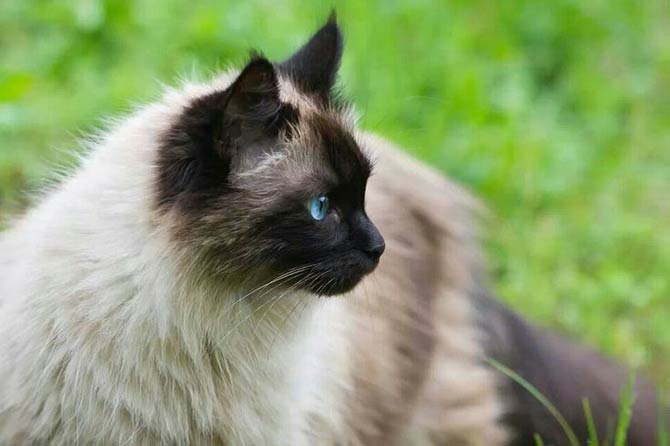
Characteristic
Appearance
The head of the Birman cat is wide and the muzzle is slightly elongated. The high ears are wide at the base and tapering towards the end. The eyes are round in shape and the shade of the iris falls into a deep sapphire.
Medium-length fur should be silky smooth and soft to the touch. Unlike the Persian and Himalayan cats, however, it does not have an undercoat. Thanks to this, the fur of the Birman cat does not become dull. The color of the coat should include the colorpoint pattern, except for snow-white socks.
The rest of the body is dominated by cream or whitish shade except for the dark ears, mask, tail and limbs. Dark elements include shades of chocolate, blue, purple, red. The longest hair covers the neck (ruff) and abdomen. The silhouette is muscular and stocky, thus contrasting with the very gentle nature of the cat.
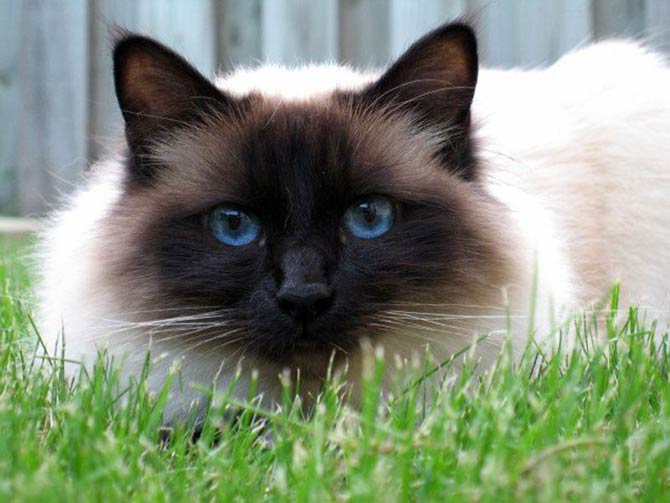
Temperament
Birman is a gentle, obedient and silent cat. He loves his guardians and will follow them from room to room. He wants to be involved in everything the owner does, but does not show the domination of the Siamese cats.
Despite his great submission to man, he cannot be denied intelligence and uniqueness. He shows great cunning and willingness to discover his surroundings, which is why it can be found in very unusual corners of the house. He communicates with the owner by soft mewing, usually when he feels hungry or wants a little affection. He likes to be stroked, hugged and carried by beloved people.
He feels good in the company of many people, so it will be perfect for multi-generation homes. Both the elderly and the child will like him, all thanks to his stoic disposition. Despite being calm, he is also kind and open to guests. He also accepts other pets, although he feels best in the presence of another Birman cat. He is classified as a homebody rather than a wanderer, so he will not be disturbed by a small apartment. However, entertainment for the cat cannot be forgotten if it stays alone for the whole day.
Every Birman’s behavior shows gentleness and grace, so the term “sacred” reflects his character well.
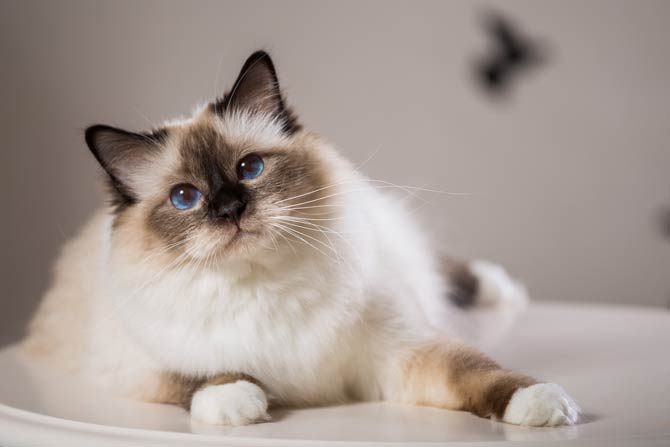
Care
Despite its long fur, Birman cat does not require such time-consuming care as Persian cat. Since the Burmese cat has no undercoat, the fur does not tend to become dull. It is recommended to brush it once a week; thanks to this, dead hair will be regularly removed. In spring, when the cat sheds its winter coat, brushing should be done a little more often. Warm baths can also help to soften the hair and remove dead coating.
To avoid dental problems (periodontal disease is relatively common in the breed), brush them daily or several times a week. It is also recommended to clean the ears with a soft, moistened cotton ball, and then thoroughly dry the ear canal.
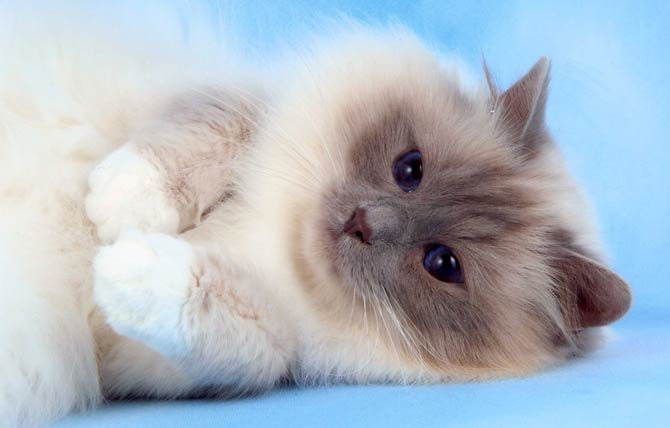
Detailed data / dimensions (size)
Birman cat, Sacred Birman, Sacred Cat of Burma
- Body length without a tail: up to 46 cm (18 in)
- Body length with a tail: up to 70 cm (27.5 in)
- Height: up to 25 cm (10 in)
- Weight: 3-7 kg (6.6 – 15 lb)
- females 3-5 kg (6.6 – 11 lb)
- males 5-7 kg (11 – 15 lb)
- Lifespan: 12-16 years
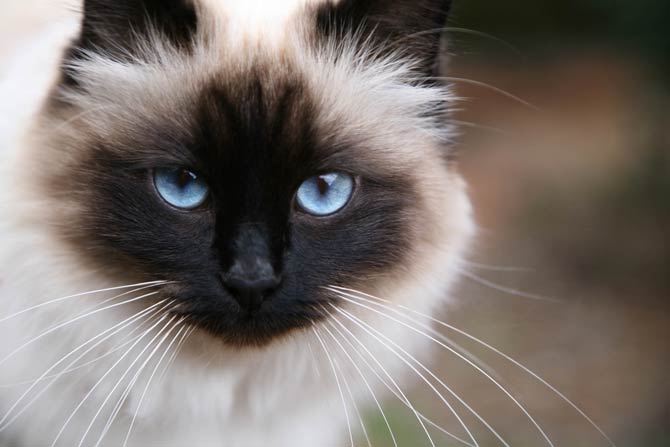
Birman cat – interesting facts
- The name of the breed comes from the word Birmanie, which is the French form of Burma – the name of an Asian country.
- Birman cat has been in the top 10 most popular cats in the USA for many years.
- Similar to Siamese cats, Birman cats are born completely white. Only with age do their ears, mask, limbs and tail darken.
